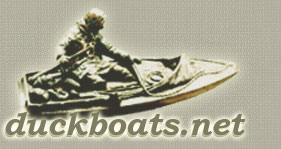Scott Farris
Well-known member
Hi guys, My Nissan 25 HP 2-stroke is giving me head aches. It is starting and idling great, but as soon as I start to run it up under load the boat will plane out then shortly after the motor stalls out. If I carefully feather in the choke I can get it to run at a higher load w/o stalling but only enough to get the boat up to 4-5 mph. This is the outboard I converted to a Jet pump.
To date I've tried two different tanks, new gas, two different hose assemblies, fuel filter has been cleaned, plugs inspected and gaps checked. I ran 2 gal of the new gas through her at the slow speed. Still didn't run well so I replaced all three small internal fuel hoses - connector to filter, filter to pump, & pump to carb, all with real hose clamps. I've taken the carb off, drained it, removed the needle, and sprayed everything down with carb cleaner making sure everything was free and all spring assemblies appear to be working correctly. Reassembled it. Took her back out and nothing changed operationally. Frustration reigns!
Any thoughts or suggestions? (please keep them physically possible and comfortable ;^)
Scott

To date I've tried two different tanks, new gas, two different hose assemblies, fuel filter has been cleaned, plugs inspected and gaps checked. I ran 2 gal of the new gas through her at the slow speed. Still didn't run well so I replaced all three small internal fuel hoses - connector to filter, filter to pump, & pump to carb, all with real hose clamps. I've taken the carb off, drained it, removed the needle, and sprayed everything down with carb cleaner making sure everything was free and all spring assemblies appear to be working correctly. Reassembled it. Took her back out and nothing changed operationally. Frustration reigns!
Any thoughts or suggestions? (please keep them physically possible and comfortable ;^)
Scott
Last edited:

